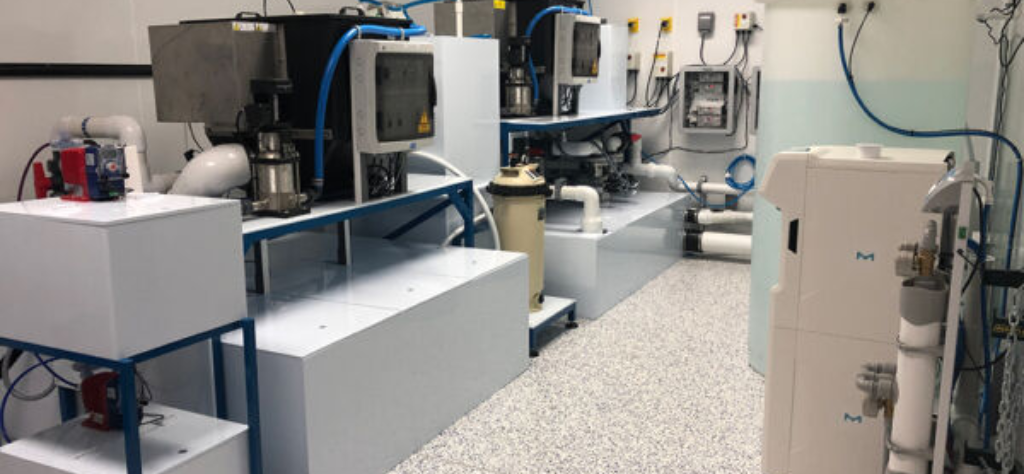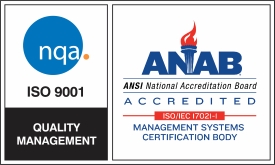What Leading Labs Are Getting Right About Small Organism Housing?

The success of any biomedical research program depends fundamentally on the quality of animal housing systems. As research demands have evolved, leading laboratories worldwide have transformed their approach to small-organism housing, particularly for aquatic species like zebrafish and Xenopus. These advances aren’t just about meeting regulatory standards. They are about creating environments that enhance research reliability, animal welfare and operational efficiency.
The Evolution of Small-Organism Housing Standards
Modern laboratory animal housing has come a long way from basic aquarium setups. The strategies for housing zebrafish used in biomedical research have evolved considerably over the past three decades, moving from hobbyist level care to sophisticated, industrialized systems that meet the demanding requirements of contemporary research.
Leading research facilities now understand that proper housing isn’t just an ethical imperative. It is a scientific necessity. Poor housing conditions can introduce variables that compromise research outcomes, making robust housing systems essential for reproducible results.
Core Principles That Top Labs Follow
The elemental operating goal of any housing system is to provide a stable and favourable macroenvironment for the animals housed within it. This macroenvironment encompasses water quality, which includes physical, chemical, and biological parameters that must be carefully controlled.
Leading laboratories prioritize:
- Temperature Control: Maintaining species-specific temperature ranges is crucial. Ranges recommended for zebrafish housing systems (pH 6.5–8 and 24–29℃) and values commonly referred to in literature being optimal for laboratory conditions ensure optimal health and behavior.
- Water Quality Management: Advanced filtration systems, regular monitoring and automated controls help maintain consistent water parameters. This includes managing pH levels, salinity, dissolved oxygen, ammonia, nitrites, and nitrates within acceptable ranges.
- Light Cycle Regulation: Proper photoperiod control supports natural circadian rhythms, which is essential for both animal welfare and research consistency.
- Space and Behavioural Considerations: Progressive labs recognize that housing design must accommodate natural behaviors. Cages, pens, or runs should provide adequate space to allow for normal physiologic needs, permit postural adjustments, and meet requirements for species-specific behavior. This principle applies equally to aquatic species, where tank design must consider swimming patterns, social interactions, and species-specific needs.
- Hygiene and Health Protocols: In general, enclosures and accessories, such as tops, should be sanitized at least once every 2 weeks. Solid-bottom caging, bottles, and sipper tubes usually require sanitation at least once a week. However, aquatic systems require more nuanced approaches to cleaning and maintenance that balance hygiene with biological filtration needs.
Species Specific Excellence: Zebrafish and Xenopus Systems
Zebrafish Housing Innovations
Modern zebrafish facilities have moved beyond simple tank arrays to sophisticated recirculating systems.
Key features that distinguish advanced zebrafish systems include:
- Recirculating Water Systems: These maintain water quality while conserving resources and ensuring consistency across all tanks.
- Modular Design: Flexibility to accommodate different life stages and experimental requirements.
- Automated Monitoring: Real time tracking of water parameters with alert systems for immediate response to any deviations.
- Breeding and Nursery Capabilities: Specialized tanks for different developmental stages with appropriate flow rates and feeding systems.
Xenopus Housing Excellence
At the authors’ facility, housing arrangements for Xenopus laevis were cumbersome and labor intensive, requiring technicians to wash frog tanks by hand several times a week, highlighting the challenges that modern systems address. Progressive facilities now employ automated cleaning systems and improved tank designs that reduce labor while enhancing animal welfare.
Advanced Xenopus systems feature:
- Larger Volume Tanks: Providing adequate space for adult frogs to exhibit natural behaviors.
- Efficient Waste Management: Systems that handle the higher bioload of amphibians without compromising water quality.
- Temperature Gradient Options: Allowing animals to thermoregulate naturally within controlled ranges.
- Easy Maintenance Design: Reducing handling stress on animals and labor burden on
Technology Integration: The Smart Laboratory Approach
Leading laboratories are increasingly integrating smart technology into their housing systems. The Iwaki Aquatic Life Support Controller monitors and controls the system with any internet ready device, exemplifying how modern facilities can maintain oversight and control even when staff aren’t physically present.
Smart features include:
- Remote Monitoring: Cloud-based platforms that allow researchers and technicians to monitor system status from anywhere.
- Predictive Maintenance: Systems that alert staff to potential issues before they become problems.
- Data Logging: Continuous recording of environmental parameters for research documentation and compliance.
- Automated Feeding: Precise delivery of food at scheduled intervals, reducing variability in animal care.
Automation and Efficiency: Reducing Variables While Improving Care
Feederbot®, our automated feeding system, is designed for effortless precision to streamline and enhance feeding protocols, representing the type of innovation that leading labs are implementing to improve both animal welfare and research quality.
Automation benefits include:
- Consistency: Eliminates human variability in daily care routines.
- Precision: Exact measurements and timing for feeding and environmental controls.
- Documentation: Automatic logging of all feeding activities for regulatory compliance.
- Staff Efficiency: Allows personnel to focus on higher-level tasks while ensuring consistent basic care.
Compliance and Quality Assurance
The proposed laboratory housing space must be appropriate with regard to all applicable requirements, including: temperature, humidity, light cycle, air exchanges, pathogen control, security, and employee safety. Leading facilities integrate these requirements seamlessly into their design rather than treating them as afterthoughts.
Modern compliance approaches include:
- Integrated Documentation: Systems that automatically generate compliance reports and maintain historical records.
- Multi-Level Monitoring: Redundant systems that ensure critical parameters are always maintained within acceptable ranges.
- Staff Training Programs: Comprehensive education on both technical systems and regulatory requirements.
Regular Auditing: Proactive assessment of system performance and compliance status.
Environmental and Economic Benefits
Progressive housing systems offer significant advantages beyond animal welfare and research quality. Water recirculation systems dramatically reduce water consumption, while automated systems minimize waste and optimize resource utilization. These systems also reduce long-term operational costs through improved efficiency and reduced maintenance requirements.
Future Directions in Small-Organism Housing
The field continues to evolve with emerging technologies and deeper understanding of animal needs. Innovations in sensor technology, artificial intelligence for predictive maintenance, and more sophisticated environmental controls promise even better outcomes for both animals and research programs.
Leading laboratories are also increasingly focusing on customizable solutions that can adapt to changing research needs, recognizing that flexibility is as important as reliability in modern research environments.
Conclusion: Excellence Through Integration
Leading laboratories distinguish themselves through integrated housing approaches that combine advanced technology, species-specific expertise, and operational efficiency. The most successful research programs recognize that excellent animal housing systems are fundamental to reliable, reproducible research outcomes. By investing in systems that provide environmental stability, automated monitoring, and regulatory compliance, these facilities create foundations for scientific excellence. For any research facility seeking to enhance their capabilities, selecting housing systems that integrate proven principles with operational flexibility becomes the key to supporting both groundbreaking research and optimal animal welfare. The right housing system transforms from a basic necessity into an invisible foundation that elevates research quality across all programs.
Ready to upgrade your laboratory’s aquatic housing systems?
Discover how Iwaki Aquatic’s specialized solutions can transform your research capabilities:
- Advanced Xenopus Housing Systems – Engineered for the unique needs of amphibian research with automated monitoring and optimal environmental controls.
- Professional Zebrafish Systems – Comprehensive recirculating systems designed to support zebrafish research from embryo to adult stages with precision and reliability.
Contact our team today to discuss how we can customize a solution that meets your specific research requirements and helps your laboratory join the ranks of facilities getting small-organism housing right.



